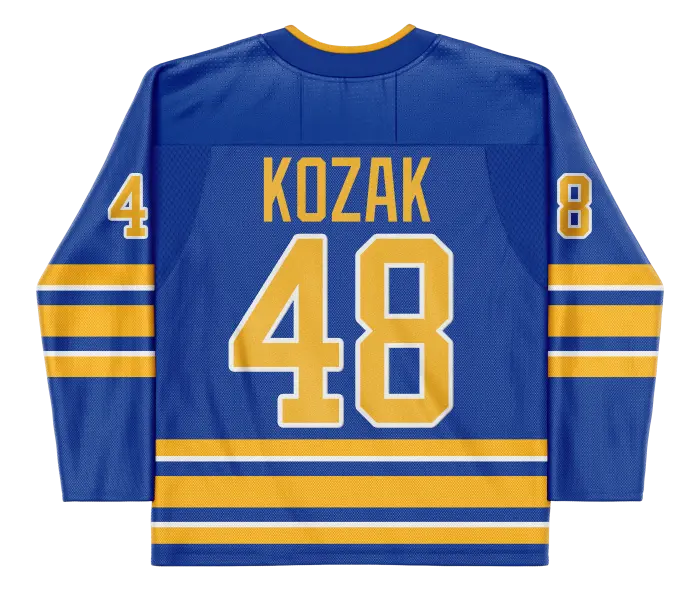Lycksell and goaltender Aleksei Kolosov were reassigned to Lehigh Valley on Wednesday while forward Anthony Richard was recalled in a corresponding move. Lycksell is yet to register a point in six NHL games this season.

Lycksell and goaltender Aleksei Kolosov were reassigned to Lehigh Valley on Wednesday while forward Anthony Richard was recalled in a corresponding move. Lycksell is yet to register a point in six NHL games this season.


Stillman was signed by the Hurricanes in the offseason but has yet to play a game in the 2024-25 season. His last NHL game was in the 2022-23 season as a member of the Buffalo Sabres when he had three points (1G / 2A) in 18 games. He has five points (2G / 3A) in 15 games with the Chicago Wolves (AHL) this season.

Richard was a fourth-round pick of the Nashville Predators in the 2015 NHL draft but has been limited to only 31 career NHL games, scoring 14 points (6G / 8A). Primarily an AHL player, the 28-year-old Richard has 19 points (8G / 11A) in 18 games with the Lehigh Valley Phantoms (AHL) this season.

Kolosov started the 2024-25 season in the AHL, posting a 3.29 GAA and .875 SV% in four games with the Lehigh Valley Phantoms (1-2-1), but has been in the NHL the past few months. He has a 3.45 GAA and .870 SV% in 15 games with the Flyers (4-8-1).

With Jared Spurgeon poised to return from a lower-body injury, Minnesota has reassigned Jiricek to the Iowa Wild (AHL). The 21-year-old Jiricek averaged 13:02 time-on-ice, scoring two points (1G / 1A), in six games with Minnesota.

Crozier made his season debut last week and recorded zero points in three games with Tampa Bay. The 24-year-old defenseman returns to the AHL, where he has nine points (3G / 6A) in 22 games with the Syracuse Crunch.

Silovs was recalled under emergency conditions on Tuesday but will return to the Abbotsford Canucks (AHL) on Wednesday. The 23-year-old Silovs has split time between the NHL and AHL this season but has been more successful in Abbotsford, posting a 2.53 GAA and .906 SV% in eight games (5-3-0).

Innala has split time between the AHL and NHL in his first professional season in North America. The 26-year-old has been impressive at the AHL level, scoring 15 points (5G / 10A) in 21 games but has not seen that success translate to the NHL level, scoring zero points in 14 games.

Ivan has seen some deployment at the AHL level lately where he's tallied two points (1G / 1A) in two games with the Eagles (AHL). The 22-year-old Czech forward has eight points (5G / 3A) in 39 games with the Avalanche but has been held off the scoresheet in 17 straight.

Blumel has been a prolific scorer at the AHL level for several seasons but has not been able to translate that to NHL success. In his most recent seven-game stint with Dallas, Blumel scored one point (1G / 0A). The 24-year-old Czech forward returns to the Texas Stars (AHL), where he has 32 points (18G / 14A) in 32 games this season.

Beck was the 33rd overall pick of the Canadiens in the 2022 NHL Entry Draft and has played three career NHL games, including two this season. The 20-year-old forward has spent most of the 2024-25 campaign in the AHL, tallying 25 points (9G / 16A) in 37 games with the Laval Rocket.

With Max Pacioretty (upper body) on Injured Reserve, the Maple Leafs have recalled Quillan from the Toronto Marlies (AHL). The undrafted 22-year-old Quillan has 15 points (6G / 9A) in 35 games with the Marlies this season.

Kevin Lankinen is reportedly dealing with an illness, so Silovs has been recalled, presumably to serve as Thatcher Demko's backup vs. the Sabres.

Levi was between the pipes for the Sabres in Monday's 6-4 loss to the Seattle Kraken, filling in for an injured Ukko-Pekka Luukkonen. Levi's return to the AHL likely indicated that Luukkonen is ready to return to the lineup.

Kozak made his NHL debut this season, scoring one goal in seven games, and has been recalled from the Rochester Americans (AHL). The 22-year-old Kozak has 12 points (6G / 6A) in 24 games with Rochester this season.

Jones played four games with Boston earlier this season but has primarily been an AHL player. The 26-year-old forward has 11 points (8G / 3A) in 26 games with the Providence Bruins (AHL) this season.

Brown has played one game this season and has 150 games of NHL experience but has primarily been an AHL player the past two seasons. The 32-year-old forward has 25 points (9G / 16A) in 37 games with the Providence Bruins (AHL) this season.

Gaunce has 182 games of NHL experience but has never been able to secure a spot on an NHL roster. The 30-year-old played five games with Minnesota earlier this season but has spent most of the 2024-25 campaign in the AHL, tallying 22 points (12G / 10A) in 26 games with the Iowa Wild.

Soderblom was a sixth-round pick of the Red Wings in the 2019 NHL Entry Draft. The towering 6'8 forward played 21 games with the Red Wings in the 2022-23 season, scoring eight points (5G / 3A), but has not played since. He has 17 points (5G / 12A) in 38 games with the Grand Rapids Griffins (AHL) this season.
